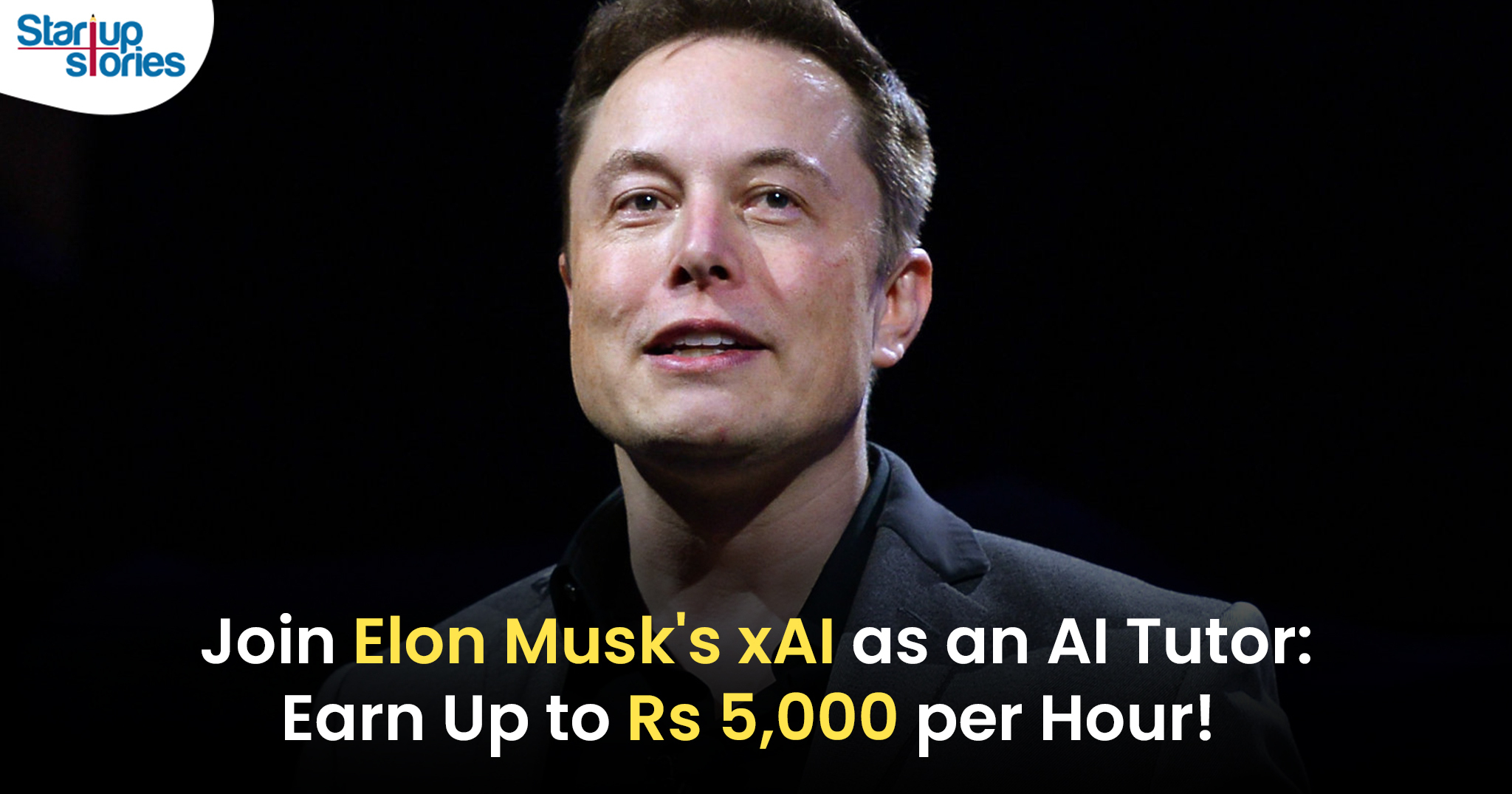Elon Musk’s artificial intelligence venture, xAI, is on the lookout for AI tutors, offering an impressive pay rate of up to Rs 5,000 per hour. While the role may sound technical, it essentially involves helping xAI’s systems learn more effectively by providing them with accurate data and feedback. The job posting is currently available on LinkedIn.
What Does the Job Entail?
xAI aims to develop AI systems that can truly understand the world, and as an AI tutor, you will play a crucial role in delivering clear, labeled data for the AI to learn from. This data is essential for training AI applications, such as chatbots and writing assistants, to better comprehend language.
Key Responsibilities
- Data Labeling: The AI tutor will collaborate closely with xAI’s technical team to gather and organize high-quality data. A key responsibility will involve using xAI’s software to label or categorize information, effectively teaching the AI what different data points mean.
- Creating Learning Tasks: Additionally, the tutor will create new learning tasks for the AI and develop assignments to enhance its capabilities in language comprehension and text production.
Who is the Ideal Candidate?
xAI is seeking candidates who possess strong reading and writing skills in English, both in informal and professional contexts. While technical expertise isn’t mandatory, experience in writing, journalism, or strong research skills would be advantageous. Candidates should also excel at sourcing and labeling content from various references.
Desired Skills
- Strong English Proficiency: Candidates must demonstrate strong reading and writing skills.
- Research Skills: Ability to navigate various information resources effectively.
- Experience in Writing: Background in technical writing or journalism is preferred.
- Independent Decision-Making: Individuals who can work independently and make informed decisions in uncertain situations are likely to thrive in this role.
- Passion for Technology: A genuine interest in technology and innovation is highly desirable.
Salary and Work Setup
The position is remote, allowing for flexible working arrangements after a two-week training period. Standard working hours are from 9 AM to 5:30 PM, but once trained, you can adjust your schedule according to your time zone.
Competitive Compensation
The pay is notably competitive, ranging from $35 to $65 per hour, equivalent to approximately Rs 5,000. In addition to this lucrative hourly rate, xAI offers benefits including:
- Medical Insurance
- Dental Insurance
- Vision Insurance
This comprehensive benefits package aims to attract top talent while ensuring employee well-being.
Conclusion
In summary, if you are enthusiastic about technology and have a knack for writing and organizing data, this opportunity could provide a rewarding way to contribute to the future of AI while earning a substantial income. As xAI continues to grow under Elon Musk’s vision, roles like this will play a crucial part in developing advanced AI systems capable of understanding and interacting with the world more effectively.
This initiative highlights Musk’s commitment to pushing the boundaries of artificial intelligence while offering competitive opportunities for individuals passionate about technology and innovation.


Registro de binance
March 23, 2025 at 9:48 am
Your article helped me a lot, is there any more related content? Thanks!
Xuoaudfi
May 25, 2025 at 11:01 pm
Explore the ranked best online casinos of 2025. Compare bonuses, game selections, and trustworthiness of top platforms for secure and rewarding gameplaycasino.
85og7
June 4, 2025 at 2:46 am
clomiphene buy cheap clomid without a prescription cost generic clomid without insurance where can i get cheap clomiphene without prescription can i buy cheap clomiphene tablets clomiphene order clomid without dr prescription
xqmtrukns
July 18, 2025 at 3:34 am
Spribe develops on innovative iGaming products & casino games. We are up to date with current trends in online gambling and try to see what future will bring. Our mission is to build cutting-edge products that create impact. Startups, business & tech W Starcasino bezpieczeństwo i uczciwość naszych gier są najważniejsze. Dlatego współpracujemy z najwyższej jakości dostawcami gier, takimi jak Spribe. Możesz być pewien, że kiedy grasz w gry Spribe w Starcasino, będziesz mieć uczciwą i transparentną rozgrywkę, ponieważ gry są testowane i certyfikowane pod kątem swojej integralności. Aviator nie jest przeciętną grą slotową online; to pełna adrenaliny podróż, która stawia cię w fotelu pilota. Od momentu powstania w lutym 2019 r. Aviator szturmem podbił świat gier online, oferując wciągające wrażenia z zakładami w czasie rzeczywistym i potencjałem znacznych zwrotów.
https://shootingcore.com/2025/07/16/red-on-bet-casino-bonusy-wyplaty-i-aplikacja-mobilna_1752662914/
Utworzenie konta w Predictor Aviator jest szybkie i łatwe. Wystarczy założyć konto użytkownika i zalogować się. These can raise your probability of accomplishment by making knowledgeable decisions based upon game mechanics and statistical analysis. As you play in demo mode, you’ll gain understanding in addition to confidence. You’ll be prepared when you’re ready to go for playing Aviator with real money. The Aviator game demo will enrich the gaming experience in addition to might even up your” “chances of success. Unlike conventional casino games, Aviator is based about an increasing contour that can accident anytime. This Aviator game review can walk you through typically the steps to begin playing, from selecting a platform to withdrawing your winnings. Experience the magic of online gaming at our Mexican casino site. With enchanting themes and captivating gameplay, you’ll be transported to a world of fantasy and fun. betway casino tienes todo lo mejor.